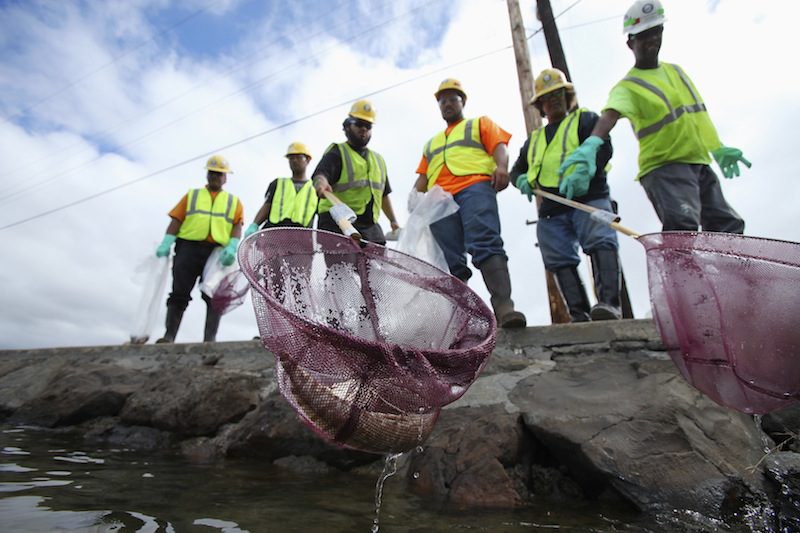Response Concludes for Oil Sheen Off Huntington Beach
A Unified Command on Monday concluded its response to an oil sheen spotted off the coast of Huntington Beach, California. Cleanup crews managed to recover approximately 85 gallons of product...


An environmental cleanup crew scoops a dead eel out of Keehi Lagoon after a massive molasses spill from a Matson pipeline in Honolulu, Hawaii, September 12 ,2013. REUTERS/Hugh Gentry
Thousands of fish are believed to have been killed in Honolulu Harbor and surrounding waters after a Matson pipeline spilled as much as 1,400 tons of sticky molasses into the sea.
The Hawaii State Department of Health (DOH) has confirmed that the brown substance contaminating much of Honolulu Harbor and Keehi Lagoon and is the apparent cause of death for many marine animals, is molasses that spilled into the harbor from a pipeline under Pier 52.
The DOH says that on Monday, a Matson ship was loaded with 1,600 tons of molasses and put out to sea before sunrise. Later at about 8 a.m., the Coast Guard received reports of a dark discoloration of the water in Honolulu Harbor.
On Tuesday, Matson Navigation Company, a subsidiary of Matson Inc., reported it had discovered a leak in their molasses pipeline near Pier 52, which is used to load ships with the substance for West Coast processing.
Matson representatives have informed the DOH that as much as 1,400 tons of molasses, or about 233,000 gallons of the liquid, may have been spilled into the harbor.
Emergency response crews are actively collecting dead fish in the area and will continue to do so for as long as necessary, the DOH says. Meanwhile, water samples are being collected to monitor the movement of the plume and judge how long it will take to flush out to sea.
The DOH is warning the public to stay out of the water as the dead fish could attract sharks and other predators.
“While molasses is not harmful to the public directly, the substance is polluting the water, causing fish to die and could lead to an increase in predator species such as sharks, barracuda and eels,” the Health Department has said in a statement. “The nutrient rich liquid could also cause unusual growth in marine algae, stimulate an increase in harmful bacteria and trigger other environmental impacts.”
Join the gCaptain Club for curated content, insider opinions, and vibrant community discussions.


Join the 105,941 members that receive our newsletter.
Have a news tip? Let us know.
Access exclusive insights, engage in vibrant discussions, and gain perspectives from our CEO.
Sign Up




Maritime and offshore news trusted by our 105,941 members delivered daily straight to your inbox.



Essential news coupled with the finest maritime content sourced from across the globe.
Sign Up